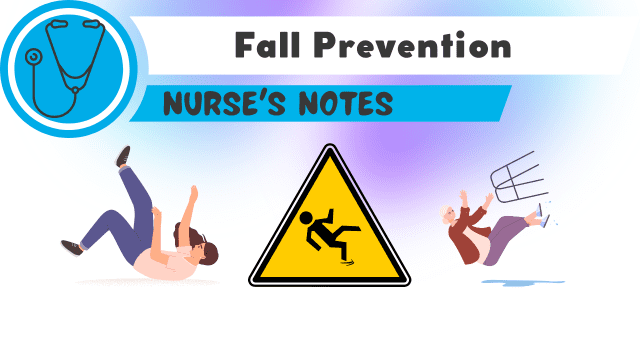The 10-Minute Rule for Dementia Fall Risk
Dementia Fall Risk - The Facts
Table of ContentsThe Best Guide To Dementia Fall RiskExcitement About Dementia Fall RiskAn Unbiased View of Dementia Fall RiskDementia Fall Risk Can Be Fun For Anyone
A fall danger analysis checks to see how likely it is that you will certainly drop. It is mostly done for older grownups. The evaluation normally includes: This includes a collection of inquiries about your general health and if you've had previous falls or troubles with equilibrium, standing, and/or walking. These tools test your strength, balance, and gait (the way you stroll).STEADI consists of testing, evaluating, and intervention. Interventions are recommendations that may lower your threat of dropping. STEADI consists of 3 steps: you for your threat of succumbing to your danger elements that can be boosted to attempt to protect against drops (for instance, equilibrium troubles, damaged vision) to lower your threat of dropping by utilizing reliable techniques (for instance, giving education and learning and sources), you may be asked several inquiries consisting of: Have you fallen in the previous year? Do you feel unsteady when standing or walking? Are you bothered with dropping?, your provider will certainly check your toughness, equilibrium, and stride, utilizing the complying with autumn analysis tools: This test checks your stride.
You'll rest down again. Your service provider will check just how long it takes you to do this. If it takes you 12 secs or more, it may mean you are at higher danger for a fall. This test checks stamina and equilibrium. You'll sit in a chair with your arms crossed over your chest.
Move one foot midway forward, so the instep is touching the huge toe of your various other foot. Relocate one foot fully in front of the other, so the toes are touching the heel of your various other foot.
The Main Principles Of Dementia Fall Risk
A lot of falls happen as a result of multiple adding aspects; as a result, taking care of the danger of falling begins with identifying the variables that add to drop risk - Dementia Fall Risk. Some of the most pertinent danger elements include: Background of prior fallsChronic clinical conditionsAcute illnessImpaired stride and balance, lower extremity weaknessCognitive impairmentChanges in visionCertain risky drugs and polypharmacyEnvironmental variables can also increase the danger for drops, including: Poor lightingUneven or damaged flooringWet or slippery floorsMissing or harmed hand rails and get hold of barsDamaged or improperly equipped devices, such as beds, wheelchairs, or walkersImproper usage of assistive devicesInadequate supervision of the people staying in the NF, consisting of those who show aggressive behaviorsA effective autumn risk administration program requires a complete medical assessment, with you can try these out input from all members of the interdisciplinary group

The treatment strategy must likewise consist of interventions that are system-based, such as those that browse around here advertise a safe setting (suitable lights, handrails, order bars, etc). The performance of the interventions need to be assessed occasionally, and the care strategy revised as needed to mirror modifications in the loss risk evaluation. Executing a loss threat management system utilizing evidence-based ideal practice can minimize the frequency of falls in the NF, while limiting the capacity for fall-related injuries.
Little Known Facts About Dementia Fall Risk.
The AGS/BGS standard recommends screening all adults aged 65 years and older for autumn danger each year. This testing is composed of asking clients whether they have actually dropped 2 or even more times in the previous year or sought clinical attention for a fall, or, if they have not fallen, whether they really feel unstable when walking.
Individuals who have fallen as soon as without injury must have their equilibrium and stride reviewed; those with stride or balance irregularities ought to receive additional assessment. A background of 1 autumn without injury and without stride or balance problems does not warrant more analysis beyond continued annual loss danger screening. Dementia Fall Risk. A fall threat analysis is needed as component of the Welcome to Medicare that site evaluation

5 Simple Techniques For Dementia Fall Risk
Documenting a falls background is one of the quality signs for autumn avoidance and management. Psychoactive medicines in specific are independent predictors of falls.
Postural hypotension can commonly be alleviated by minimizing the dose of blood pressurelowering drugs and/or quiting medications that have orthostatic hypotension as a negative effects. Use of above-the-knee assistance hose pipe and sleeping with the head of the bed raised might likewise minimize postural reductions in blood pressure. The advisable components of a fall-focused health examination are received Box 1.

A pull time more than or equivalent to 12 secs recommends high loss threat. The 30-Second Chair Stand examination examines reduced extremity toughness and equilibrium. Being incapable to stand from a chair of knee elevation without making use of one's arms indicates raised loss danger. The 4-Stage Balance test evaluates fixed equilibrium by having the client stand in 4 positions, each progressively more tough.